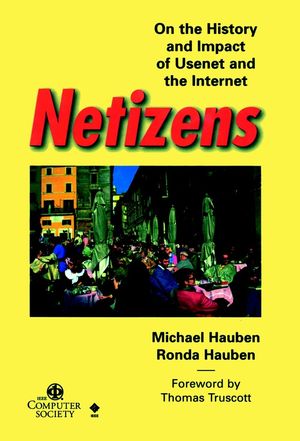Finn Brunton: Spam: Shadow History of the Internet (2013)
Filed under book | Tags: · arpanet, botnet, captcha, history of technology, internet, malware, spam, technology, usenet

The vast majority of all email sent every day is spam, a variety of idiosyncratically spelled requests to provide account information, invitations to spend money on dubious products, and pleas to send cash overseas. Most of it is caught by filters before ever reaching an in-box. Where does it come from? As Finn Brunton explains in Spam, it is produced and shaped by many different populations around the world: programmers, con artists, bots and their botmasters, pharmaceutical merchants, marketers, identity thieves, crooked bankers and their victims, cops, lawyers, network security professionals, vigilantes, and hackers. Every time we go online, we participate in the system of spam, with choices, refusals, and purchases the consequences of which we may not understand.
This is a book about what spam is, how it works, and what it means. Brunton provides a cultural history that stretches from pranks on early computer networks to the construction of a global criminal infrastructure. The history of spam, Brunton shows us, is a shadow history of the Internet itself, with spam emerging as the mirror image of the online communities it targets. Brunton traces spam through three epochs: the 1970s to 1995, and the early, noncommercial computer networks that became the Internet; 1995 to 2003, with the dot-com boom, the rise of spam’s entrepreneurs, and the first efforts at regulating spam; and 2003 to the present, with the war of algorithms—spam versus anti-spam. Spam shows us how technologies, from email to search engines, are transformed by unintended consequences and adaptations, and how online communities develop and invent governance for themselves.
Publisher MIT Press, 2013
Infrastructures Series
ISBN 026201887X, 9780262018876
270 pages
review (Evgeny Morozov, The Wall Street Journal)
interview with author (NPR)
Download (removed on 2013-5-20 upon request of the publisher)
Comment (0)Bill Stewart: Living Internet (2000)
Filed under living book | Tags: · computing, email, history of communications, history of computing, history of technology, internet, irc, mailing list, mud, usenet, web

An in-depth reference about the Internet.
The site was written from 1996 through 1999, first published on the web on January 7, 2000, and updated regularly. It has more than 700 pages, 2,000 intra-site links, and 2,000 external links to some of the world’s best online content about the Internet.
The site is authored by Bill Stewart who has used the Internet since 1988, and first appreciated the power of the medium during the Tiananmen Square rebellion in China in 1989, when he saw how the net kept Chinese communities around the world in touch with the events through email and newsgroups, bypassing all government censorship.
View online (HTML)
Comment (0)Michael Hauben, Ronda Hauben: Netizens: On The History And Impact Of Usenet And The Internet (1996)
Filed under book | Tags: · arpanet, community, computing, history of communications, history of computing, history of technology, internet, media history, netizens, unix, usenet, web

Netizens, one of the first books detailing the Internet, looks at the creation and development of this participatory global computer network. The authors conducted online research to find out what makes the Internet “tick”. This research results in an informative examination of the pioneering vision and actions that have helped make the Net possible. The book is a detailed description of the Net’s construction and a step-by-step view of the past, present, and future of the Internet, the Usenet and the WWW.
The book gives you the needed perspective to understand how the Net can impact the present and the turbulent future. These questions are answered: What is the vision that inspired or guided these people at each step? What was the technical or social problem or need that they were trying to solve? What can be done to help nourish the future extension and development of the Net? How can the Net be made available to a broader set of people?
With foreword by Tom Truscott
A print edition was published by the IEEE Computer Society Press, later distributed by John Wiley
ISBN 0-8186-7706-6
authors
publisher
google books
View online (HTML)
Comment (0)
